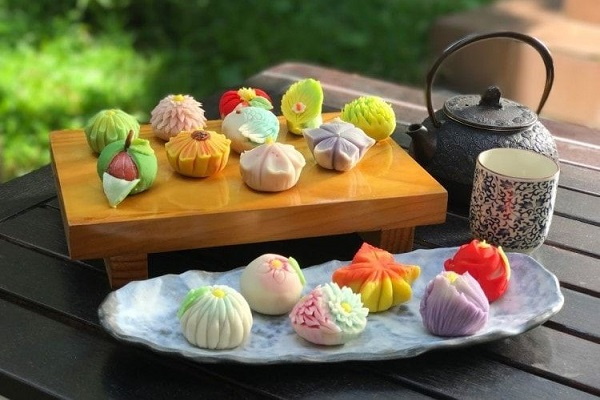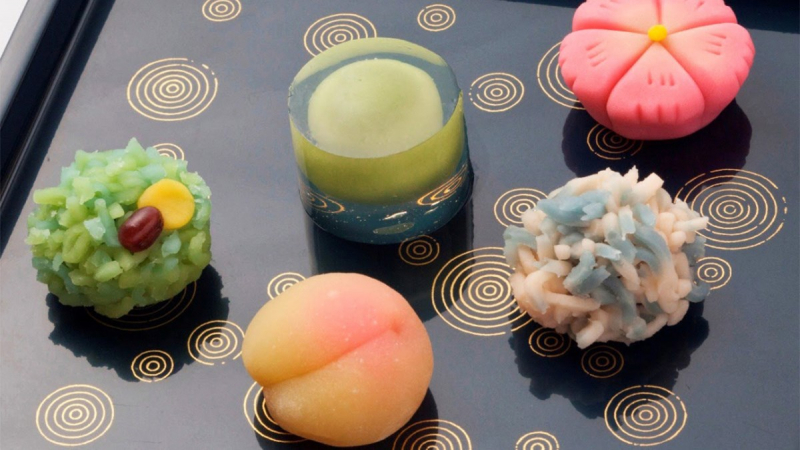Wagashi
Wagashi refers to traditional Japanese sweets that are typically enjoyed with tea. These delicate and artistic confections have a long history and are deeply rooted in Japanese culture. Wagashi come in a wide variety of shapes, colors, and flavors. They can be classified into different types, such as nerikiri, mochi, dorayaki, yokan, and manju. Each type has its own distinct characteristics and ingredients.
Wagashi are made using natural and seasonal ingredients, including glutinous rice flour, sweet bean paste (anko), agar-agar, matcha (powdered green tea), fruits, and edible flowers. Anko, made from azuki beans, is the most common filling used in wagashi. It can be smooth or chunky, with varying degrees of sweetness.
One of the distinguishing features of wagashi is its exquisite presentation. The sweets are meticulously crafted with attention to detail, reflecting the aesthetics of Japanese culture. They often incorporate elements of nature, such as cherry blossoms, leaves, or seasonal motifs, and are beautifully arranged on special serving trays or in traditional lacquerware.
Wagashi is not only meant to be enjoyed for its taste but also for its symbolic significance. Many wagashi are created to celebrate specific occasions, such as festivals, tea ceremonies, or seasonal events. They often reflect the changing seasons, with ingredients and designs that highlight the colors and flavors associated with each time of year.
Enjoying wagashi is a sensory experience. The texture, fragrance, and taste of these sweets are carefully balanced to create a harmonious and satisfying moment. They are typically paired with a cup of tea, such as matcha, to enhance the overall experience.














